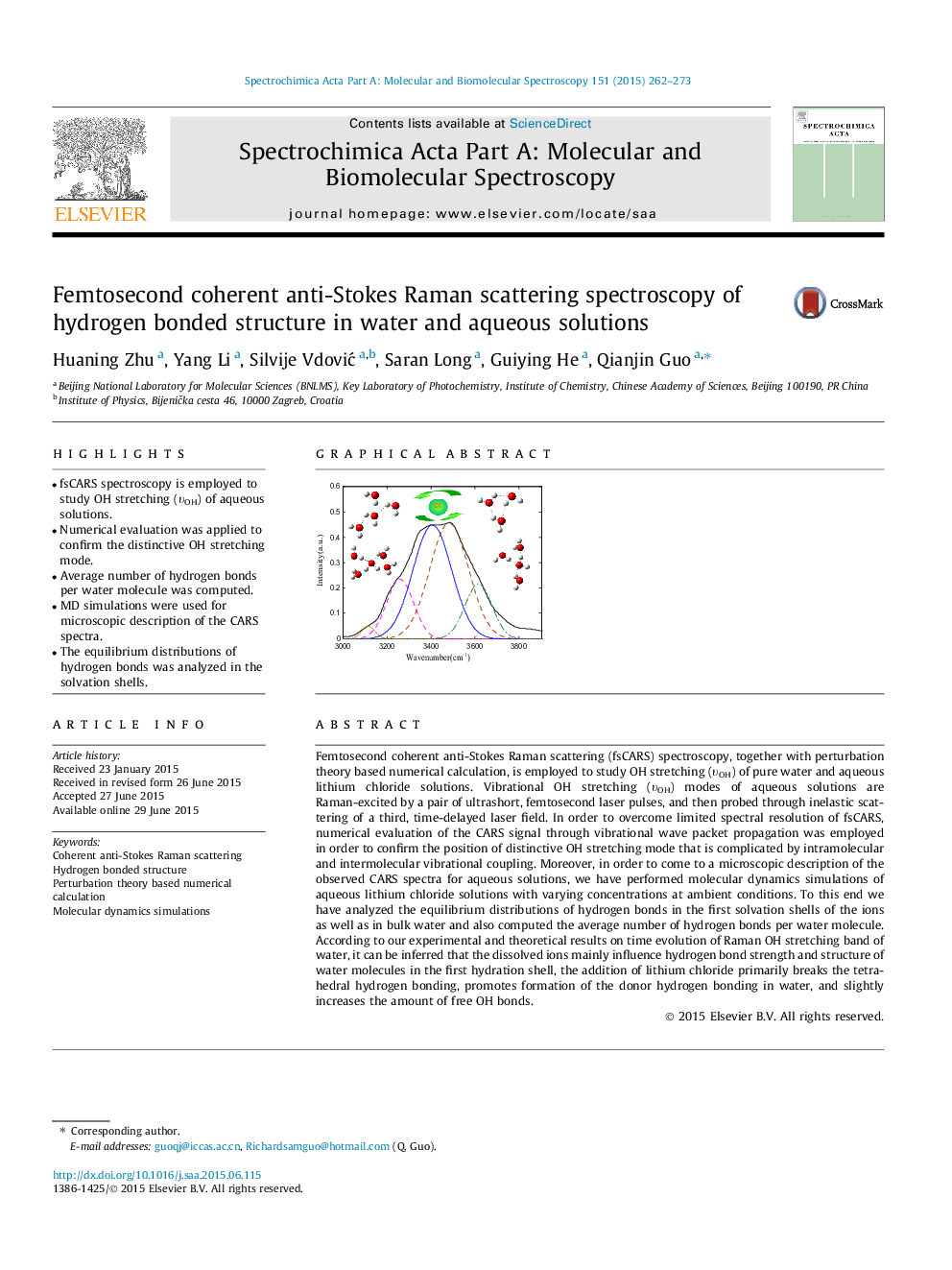| Article ID | Journal | Published Year | Pages | File Type |
|---|---|---|---|---|
| 1230078 | Spectrochimica Acta Part A: Molecular and Biomolecular Spectroscopy | 2015 | 12 Pages |
•fsCARS spectroscopy is employed to study OH stretching (υOH) of aqueous solutions.•Numerical evaluation was applied to confirm the distinctive OH stretching mode.•Average number of hydrogen bonds per water molecule was computed.•MD simulations were used for microscopic description of the CARS spectra.•The equilibrium distributions of hydrogen bonds was analyzed in the solvation shells.
Femtosecond coherent anti-Stokes Raman scattering (fsCARS) spectroscopy, together with perturbation theory based numerical calculation, is employed to study OH stretching (υOH) of pure water and aqueous lithium chloride solutions. Vibrational OH stretching (υOH) modes of aqueous solutions are Raman-excited by a pair of ultrashort, femtosecond laser pulses, and then probed through inelastic scattering of a third, time-delayed laser field. In order to overcome limited spectral resolution of fsCARS, numerical evaluation of the CARS signal through vibrational wave packet propagation was employed in order to confirm the position of distinctive OH stretching mode that is complicated by intramolecular and intermolecular vibrational coupling. Moreover, in order to come to a microscopic description of the observed CARS spectra for aqueous solutions, we have performed molecular dynamics simulations of aqueous lithium chloride solutions with varying concentrations at ambient conditions. To this end we have analyzed the equilibrium distributions of hydrogen bonds in the first solvation shells of the ions as well as in bulk water and also computed the average number of hydrogen bonds per water molecule. According to our experimental and theoretical results on time evolution of Raman OH stretching band of water, it can be inferred that the dissolved ions mainly influence hydrogen bond strength and structure of water molecules in the first hydration shell, the addition of lithium chloride primarily breaks the tetrahedral hydrogen bonding, promotes formation of the donor hydrogen bonding in water, and slightly increases the amount of free OH bonds.
Graphical abstractFigure optionsDownload full-size imageDownload as PowerPoint slide
